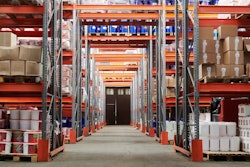
As the brick-and-mortar economy of years past continues to fizzle out, now at an accelerated rate due to a global pandemic, the race to transform traditional storefronts and warehouses into distribution centers for same-day and next-day delivery has intensified.
In 2020, North America’s retail e-commerce sales grew by almost 40% in 2020. The gig economy is necessary for survival, and retailers need to keep up with the demand for an e-commerce delivery program. But, it's not without risks. If you don’t own your brand, know your customers and have access to your data, your business could be at risk.
Here’s how you can mitigate three of the biggest risks.
Risk 1: You don’t know where to start to maintain control of brand and revenue
Retailers want to keep as much as possible in-house to control their brand and revenue, but don’t know where to start. They need to think about the infrastructure of the program, who will handle the operations, how will they recruit and onboard 1099 contractors, who will manage the human resources aspect of hiring 1099 workers, who will manage the workflow of the drivers, handle the payroll and taxes, how will accidents and risk management for drivers be solved and what kind of technology can be put in place to hold all of these pieces together. Companies can waste time, money and resources by trying to build a program from scratch. In today’s era of wanting quick solutions, time is not on their side.
Risk 2: You don’t own your brand, customers or data
With the high demand to have everything delivered to your door, many retailers needed a quick solution with minimal effort. Retailers turned to third-party administrators to assist with an online shopping platform, e-commerce fulfillment and independent contractors for deliveries. But, at what cost? In addition to the high fees these partners demand, retailers are finding they don’t own the customer experience or data, leaving them in a vulnerable position economically. They can’t market to their customers, and their name is on the line when an independent contractor doesn’t deliver.
Risk 3: New regulations for worker classification
In 2021, retailers began creating and operating their own delivery app-based platform. Now these apps will be assessed on a completely new set of regulatory requirements, primarily related to worker classification. The gig economy is dependent on self-employed/1099 entrepreneurs, who use gig apps to source customers for their businesses. While many states and jurisdictions welcome the gig economy, others are more antagonistic, and the federal government is beginning to address this new frontier as well. Companies who fail to properly classify delivery drivers as independent contractors and who fail to operate in a way that is consistent with state-specific guidelines may face legal challenges, which could inhibit their ability to reinvent themselves.



















